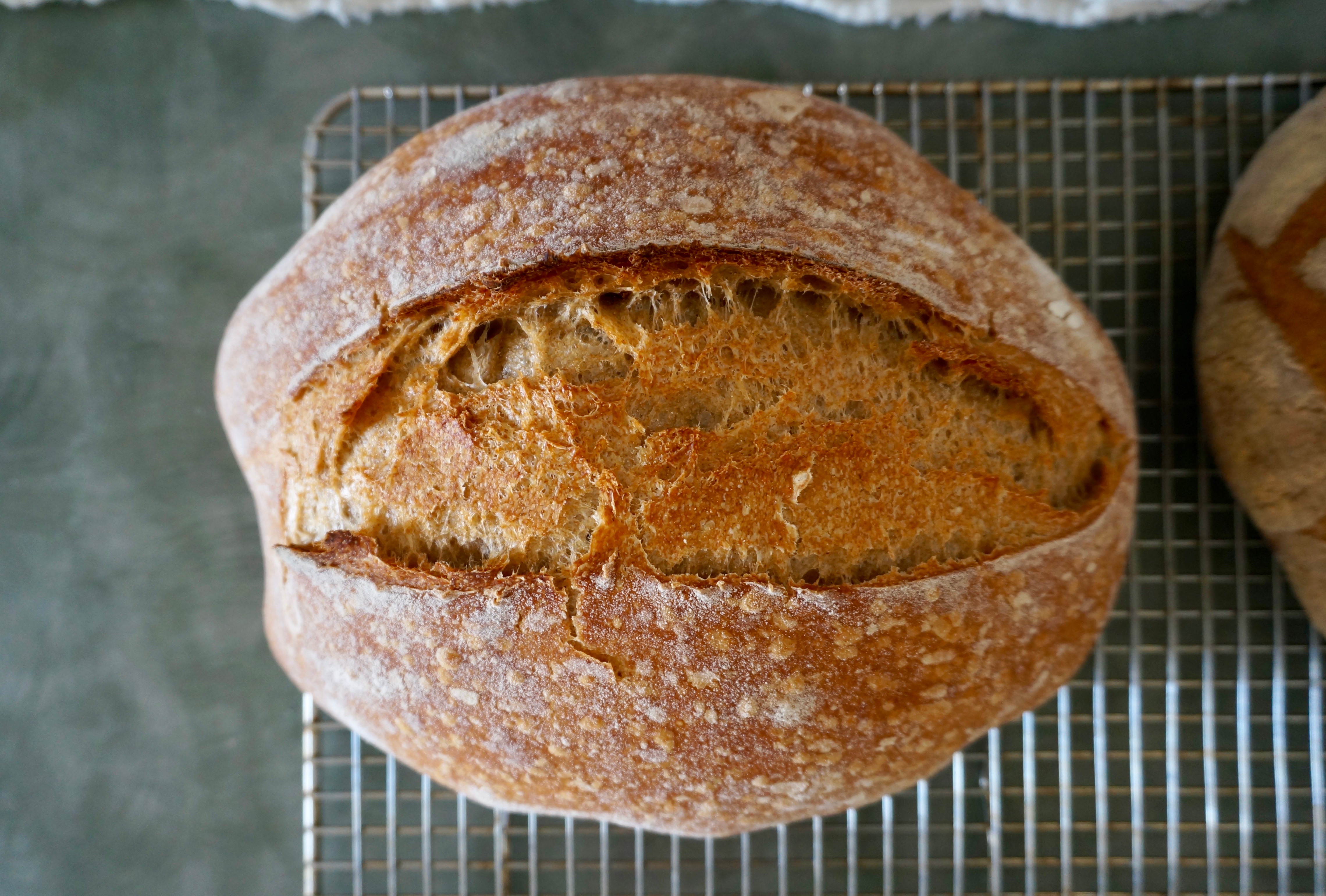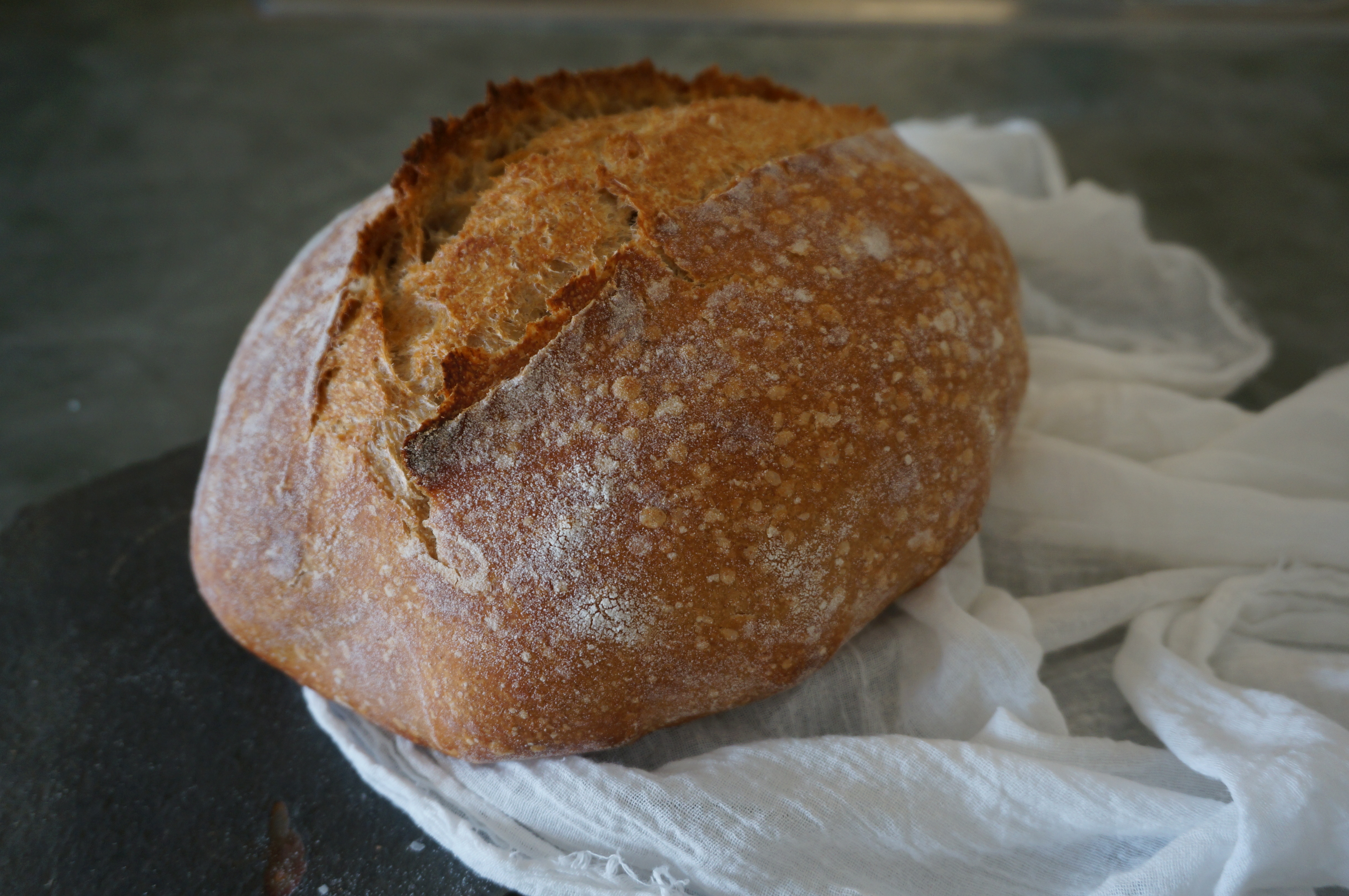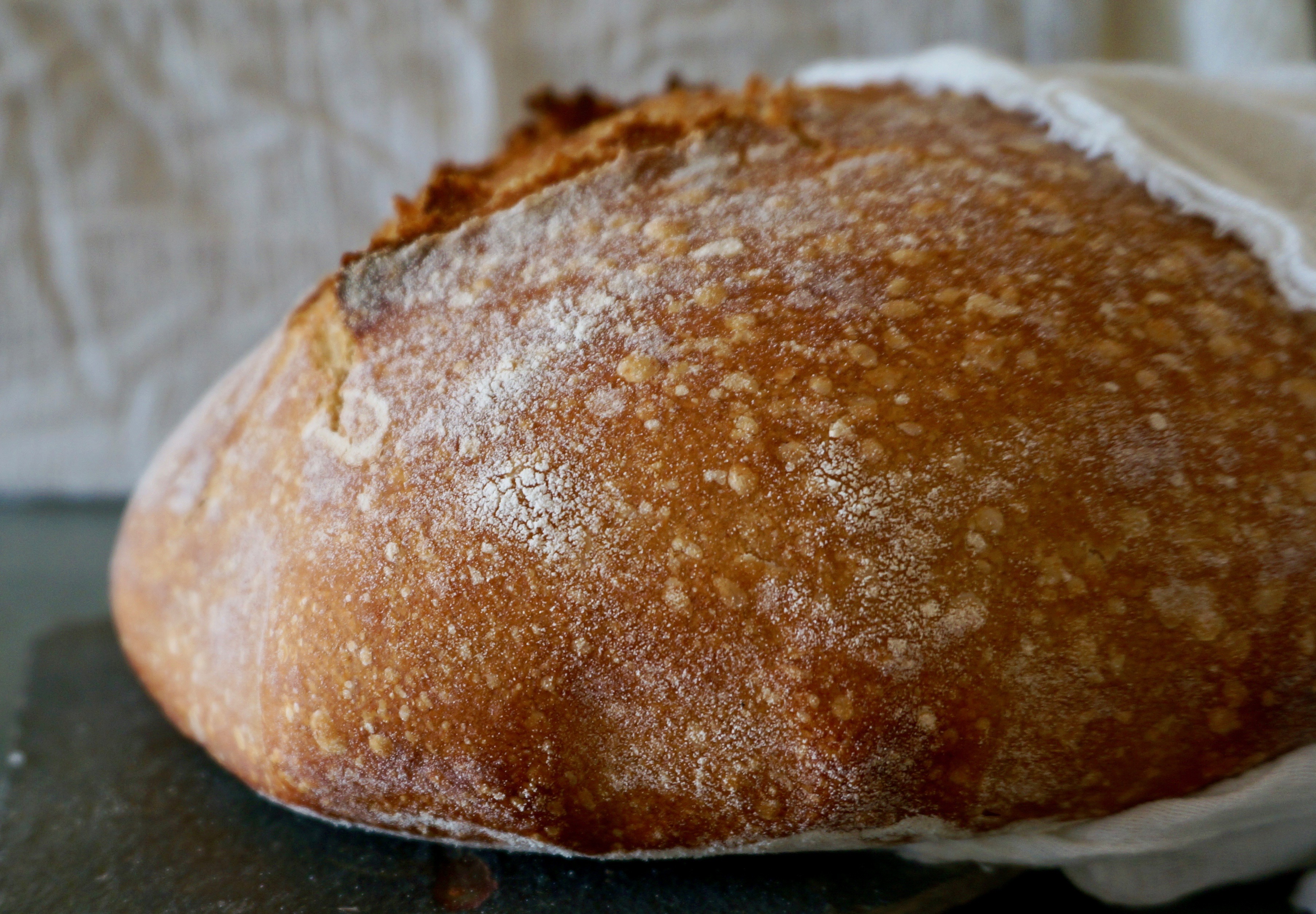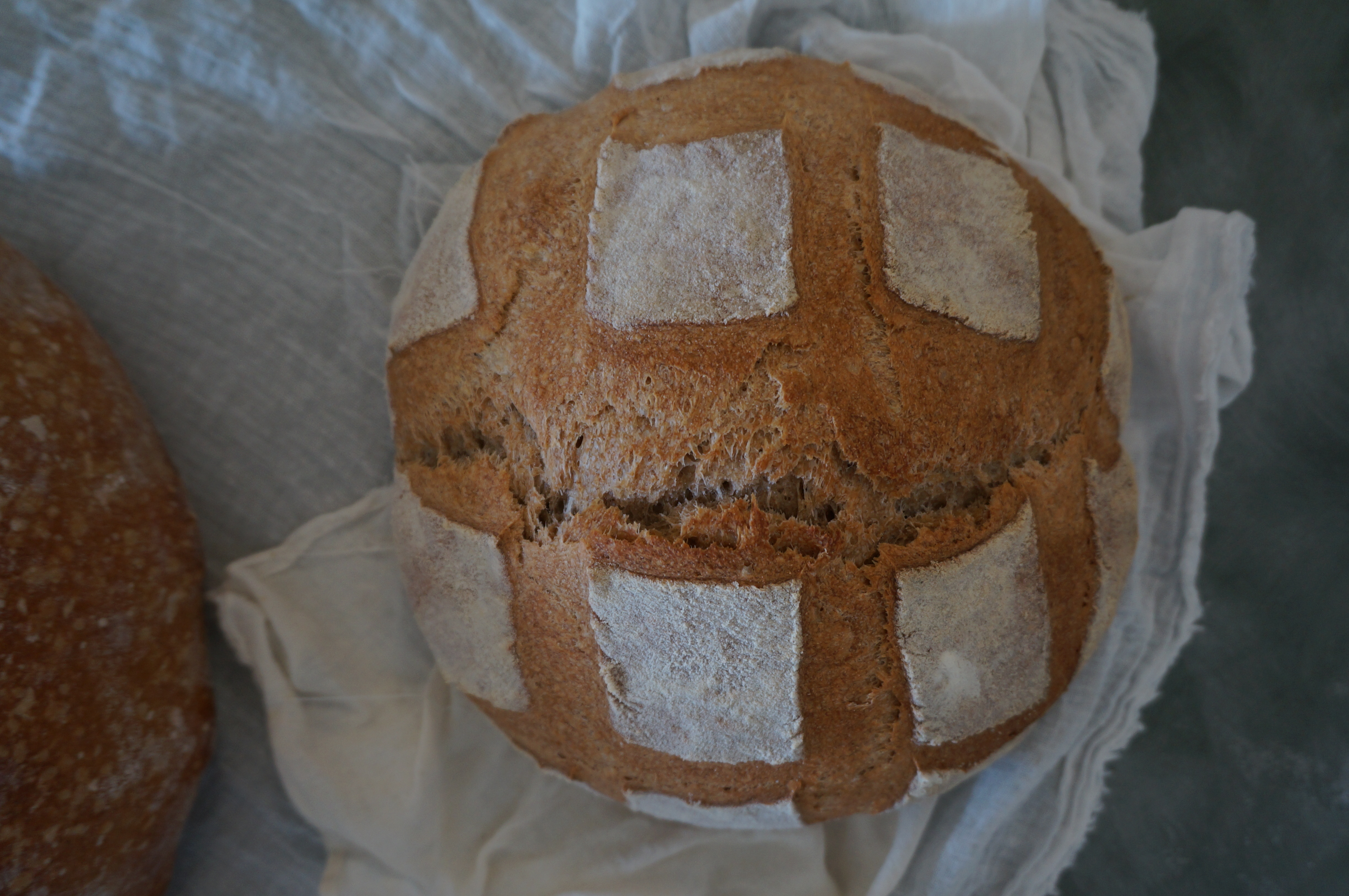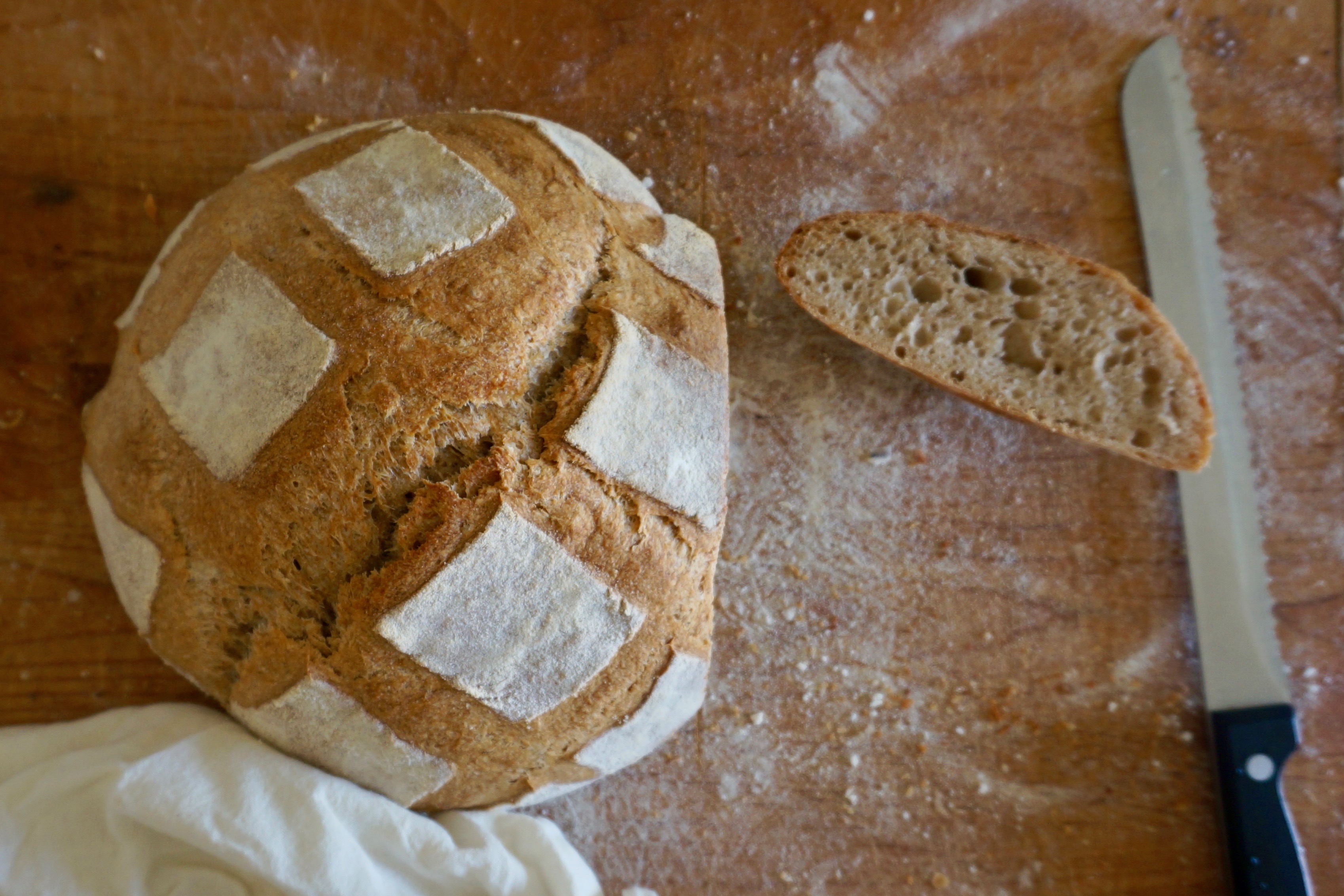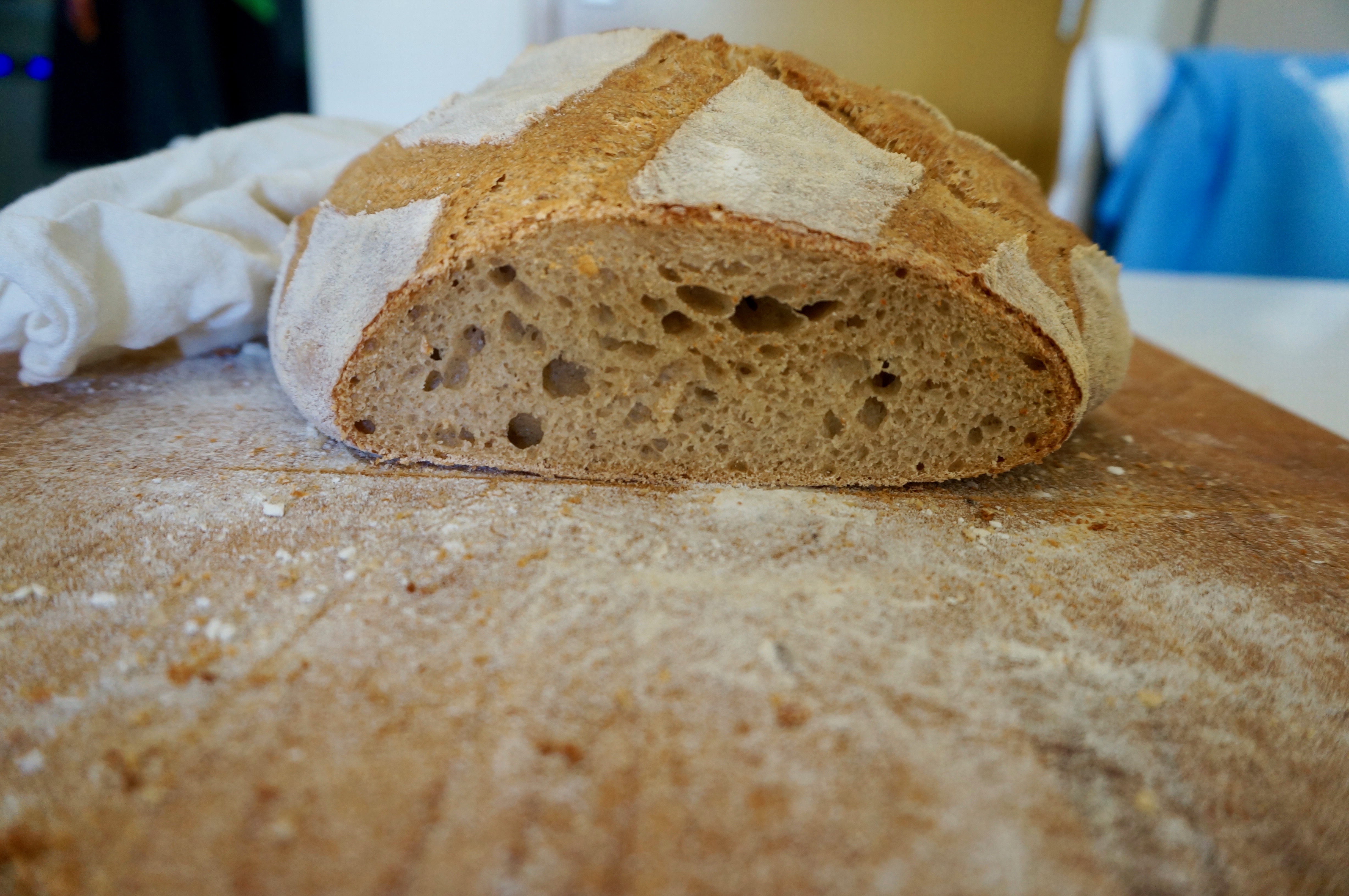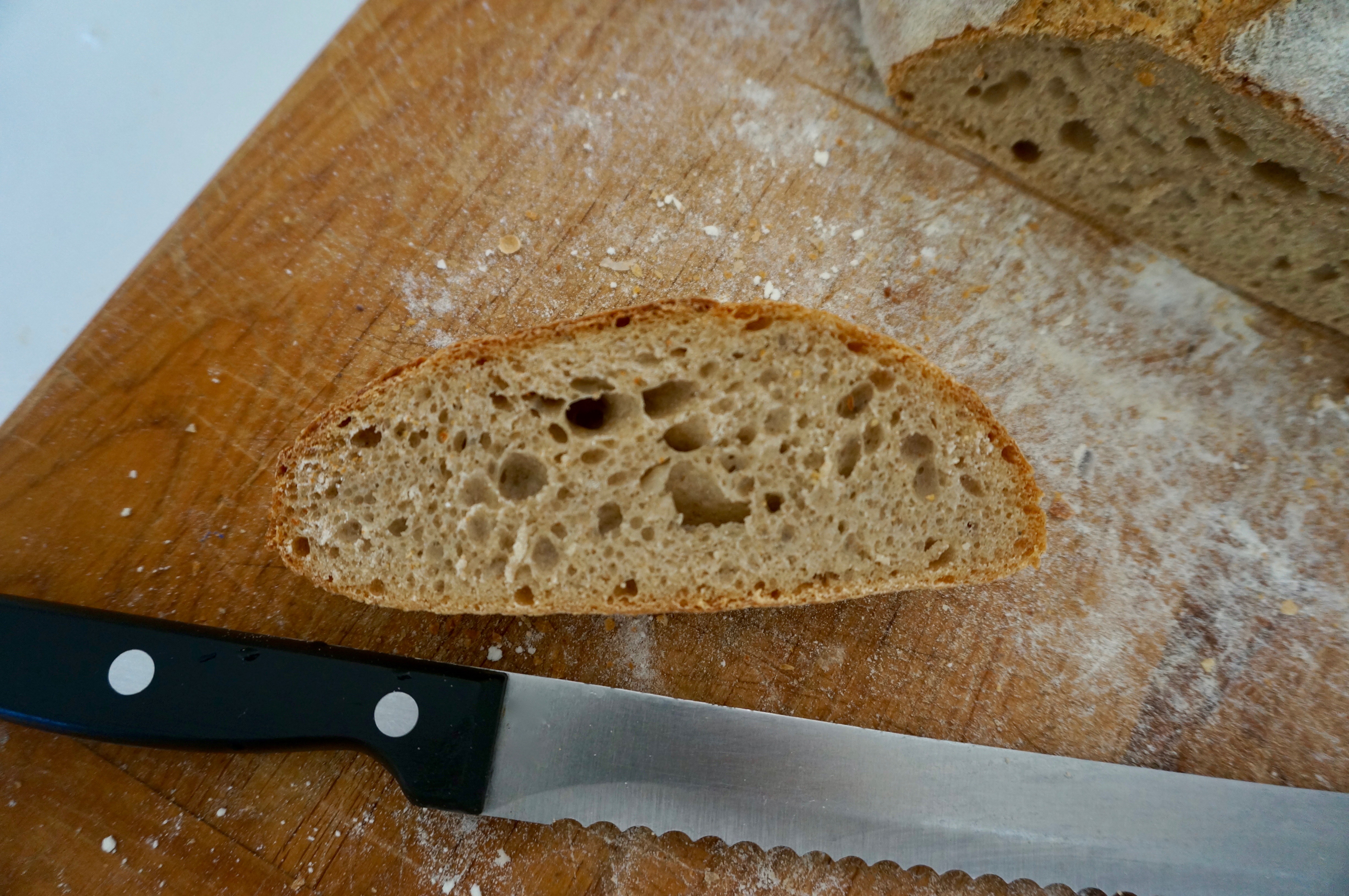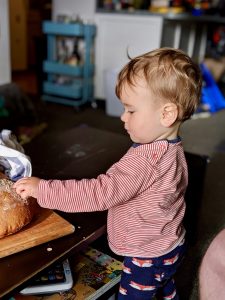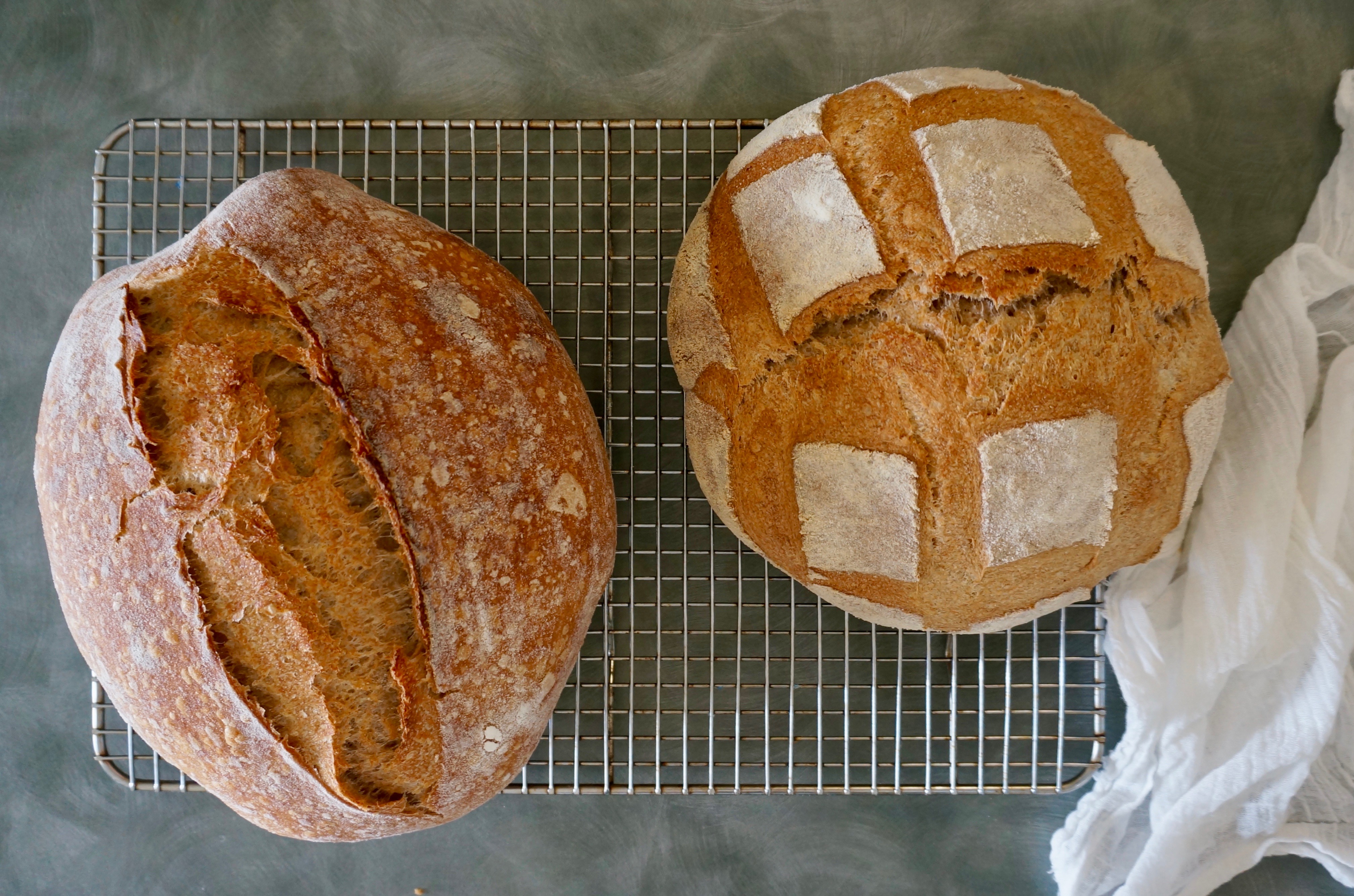
Finally, there is a sourdough success to write about! If you don’t know why that warrants an exclamation mark, have a look over here. For the past several weeks, I’ve been nourishing a new starter, following a recipe from the perfect loaf. I’ve been telling my friends, only half jokingly, that the new starter is the best cared for creature in our home. Seriously, it has been given its own room, fed two to three times a day, wrapped in warm tea towels, and sheltered from cold and drafts.
It took me around two weeks to get the starter ready to bake with, but so far it looks like it was well worth the effort (fingers crossed I didn’t just jinx my next bake). The two most important lessons that I have learned so far from hanging out over at the perfect loaf are 1) heated tea towels help get the fermentation going in your starter, and 2) rice flour is so much better than regular flour in ensuring the dough can get back out of the proofing basket. These two points may not sound like profound insights to you, but I can assure you that they have improved my sourdough baking game already.
To the first point: With my previous starter, I suspected that it wasn’t strong enough (because the bread kept not rising properly, duh). I had read that a common problem is the starter being too cold, which delays or hinders fermentation. But I had no idea how to remedy that. With the current starter, I have fixed this problem by storing my starter jar in the microwave oven wrapped in a heated (also in the microwave) tea towel. I heat the towel right after feeding the starter, and this creates a warm environment that appears to foster fermentation really well.
Still, it took me almost a week to get my starter to ferment enough that I could see more than tiny bubbles. The pictures below are from the first week. My starter is now generally double the size of what it is in these pictures. That is good, because it still contains the same amount of flour and water as it did back then. The rest is air, and that is exactly how it should be.
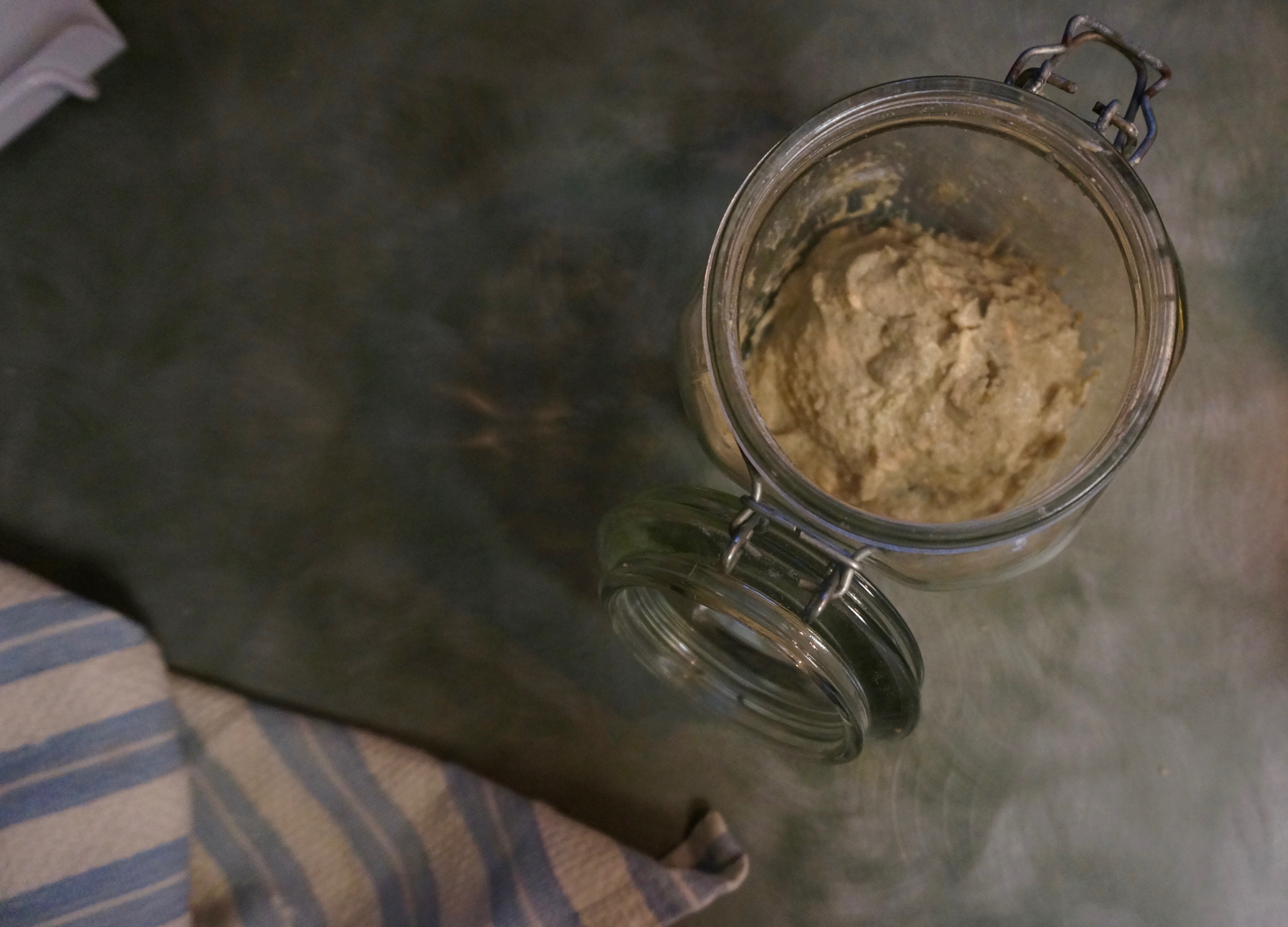
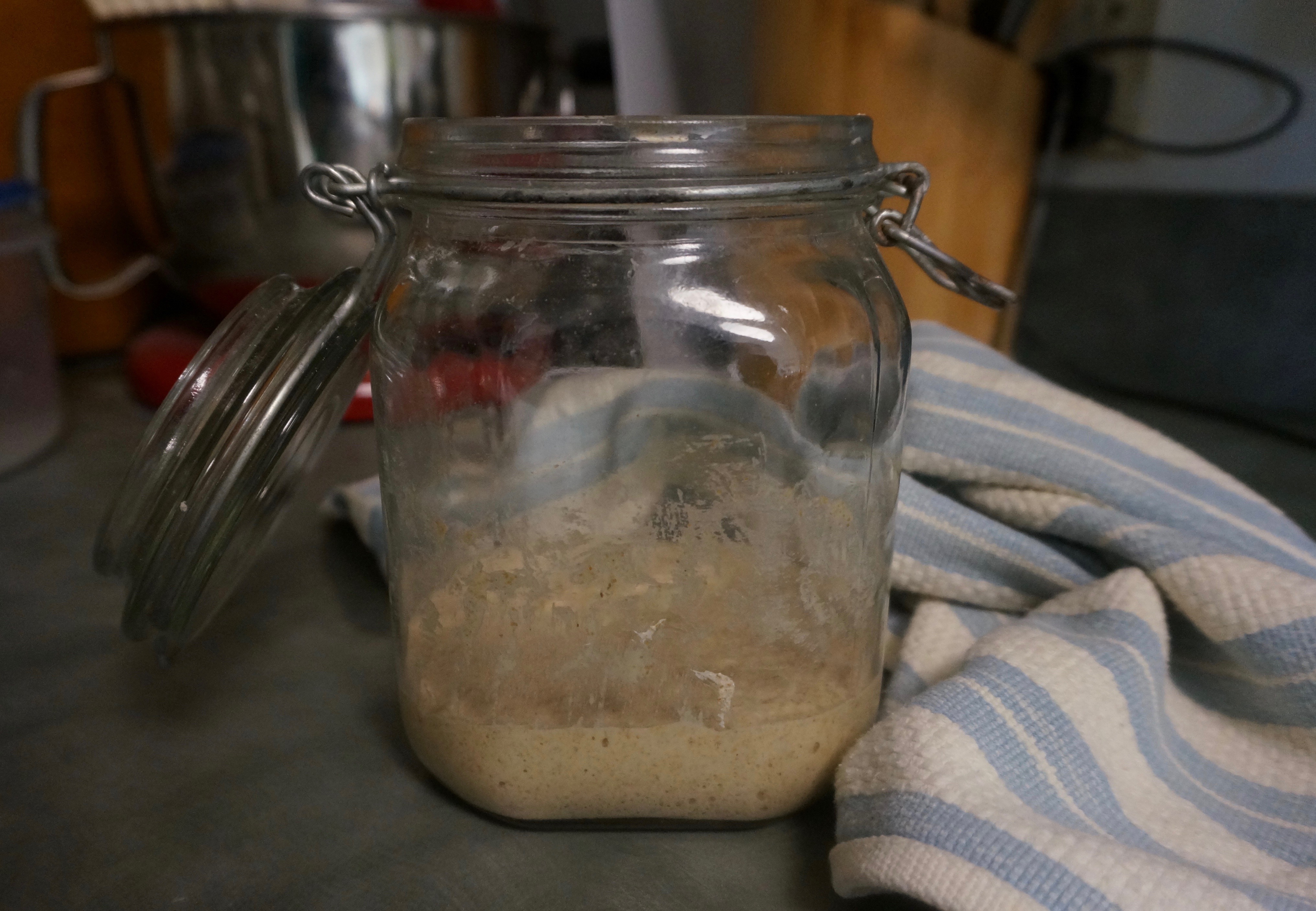
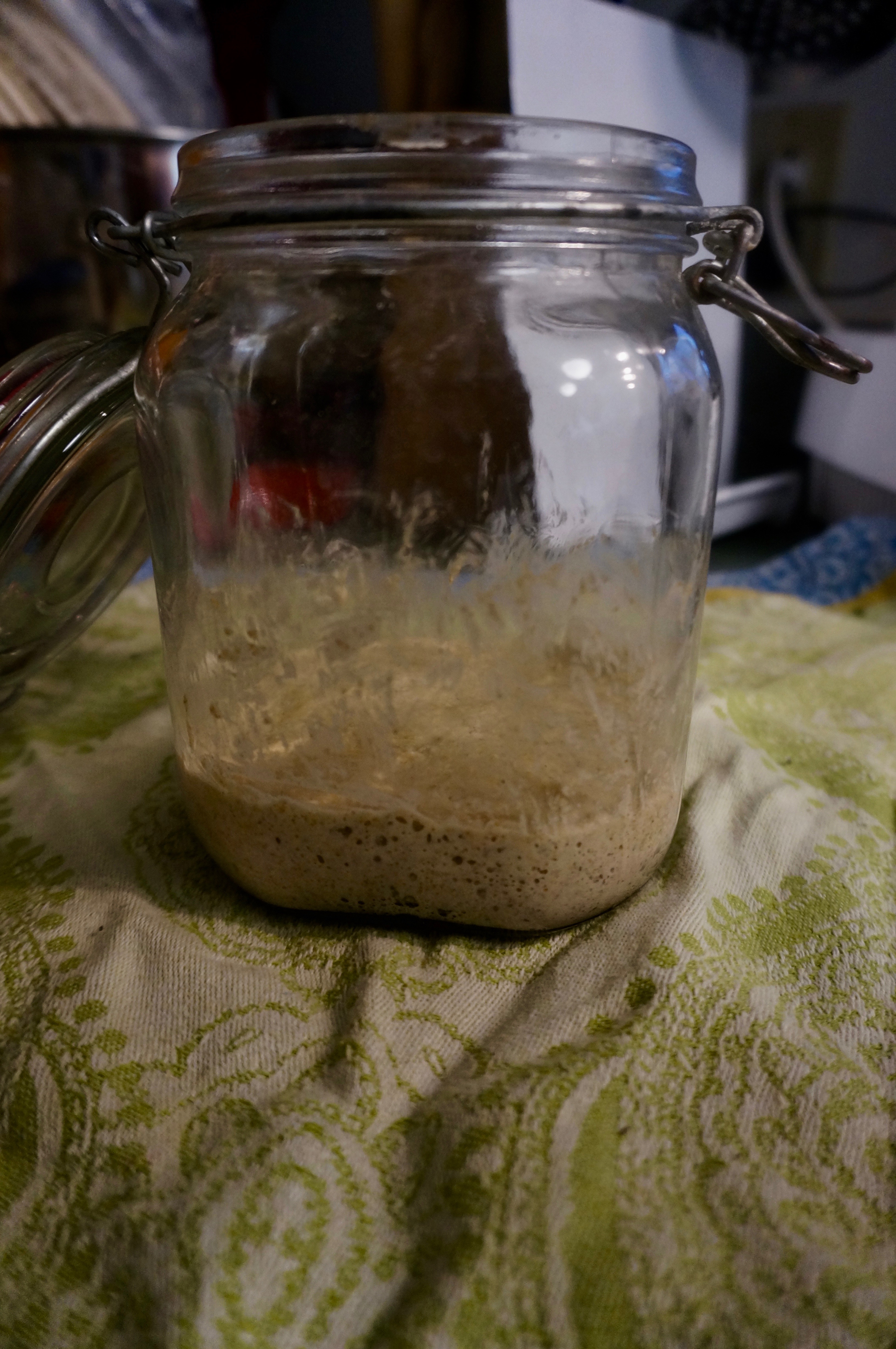
I’m currently feeding my starter twice a day: I remove existing starter so that there are only 40 grams left, and then I add 40 grams of room temperature, filtered water (I told you that starter is spoiled!), and 40 grams of a flour mixture that is half rye flour, half white flour. As I’m writing this, I can’t even believe myself. All this work and careful attention to detail just to make bread! Who in their right mind does that? Anyway, there are lots of documented health benefits of natural fermentation that I could bring up to excuse this obsessive behavior, but the truth is that I just want to be able make bread from nothing but flour and water. Not because it saves money on yeast (though it does, yay!), but just because it is cool. Sometimes I’m so thankful that I didn’t grow up in the US. I’m not sure I would have survived high school.
But back to the bread.
After I got my starter up and running (wrapped in its warm towel), I ventured to try actually baking. This involved multiple intense steps as well, and basically took all weekend. Friday, make the levain. Saturday, and I mean ALL of Saturday, do something to the dough, then wait 30 minutes, then repeat. I wont go into detail, and there won’t be a recipe in this post, because as of yet, I don’t dare to digress from this, which is where the interested baker should go to actually get the details. But I have to mention the rice flour, which made an appearance in one of the last steps of the day.
This bread has to rise overnight in the fridge in a proofing basket or bowl covered with cloth, inside a plastic bag. As you can imagine, if you leave a wet dough inside a cloth in the fridge overnight in a plastic bag that traps all the moisture, a veritable disaster occurs the next morning when you try to get it back out. The result is only slightly less disastrous if you remember to sprinkle the cloth with regular flour before you put in the dough. I’ve spent many a weekend morning cursing over stuck dough, sticky fingers and misshapen loafs on account of using this approach.
Thankfully, this adventure has a happy ending, because with rice flour, all these problems go away. Imagine that! All that rice flour sitting unused in my pantry, while my dough got stuck to cloths and towels, simply because I didn’t know! I don’t know how or why it works, but let’s be honest. When you’ve spent your entire weekend baking two loaves of bread, you’re too tired to ask questions about why something works the way it does – especially when all that something does is make your life easier.

So the dough rises overnight in the fridge, and then it’s time to make it into breads. I baked one loaf in my newly acquired Dutch oven, and the other (the one with the squares) on the pizza stone. And oh, were they worth the hassle. Airy, chewy, and crusty, slightly tangy, but not at all sour, and with a deep aroma of just bread, a sort of sweetness, but much more layered than that. I’m totally going to bake another batch this weekend. You’ll want to, too, once you’ve seen all the pictures!
